Head-to-Head: Samsung Galaxy S4 vs. Apple iPhone 5
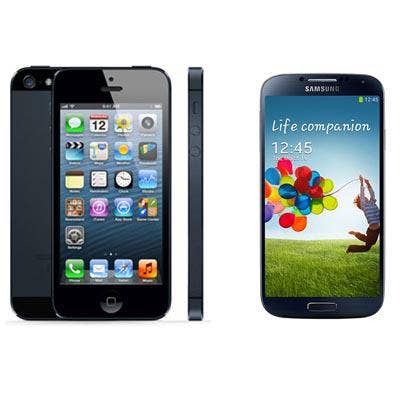
Smartphone Universe
With the launch of the Galaxy S4, Samsung not only raises the bar on smartphone capabilities, it blasts it into another universe. Sure, software is much of what makes it soar, but Galaxy S4's hardware also runs circles around Apple's stalwart smartphone.
Regardless of how the solar winds blow, Samsung's latest iPhone-killer has seriously upped the ante for all smartphones, and it delivers features that a few years ago were the stuff of science fiction thrillers.
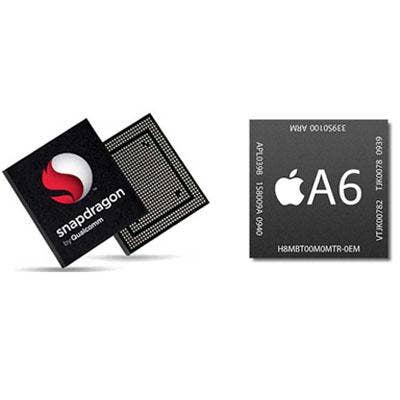
CPU, GPU And Memory
We start by comparing processing power of U.S. models. The Galaxy S4 contains slightly better innards than the iPhone 5. Galaxy's
Sven's trusty pixel-per-inch calculator Gorilla Glass 3 Display advantage goes to Samsung.
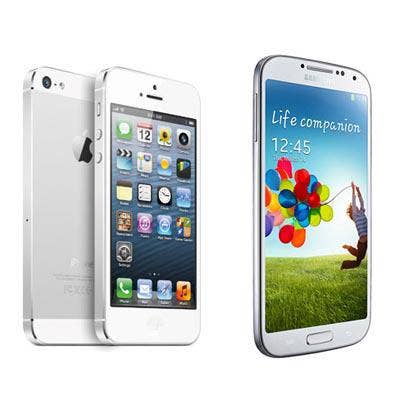
Dimensions
When comparing Galaxy SII vs. Galaxy SIII in January, we marveled at the horsepower in the newer model that was just 0.01 inches thicker. Amazingly, the Galaxy S4 is thinner and lighter than its predecessor while doubling its processing capabilities and cramming HD pixel quantities into its display.
At 5.4 x 2.7 inches, the Galaxy S4 is a half-inch longer and wider than the iPhone 5. But at 0.31 inches thick, it's a mere one hundredth of an inch thicker than iPhone. In other words, both of these beauties are super-thin, which is achieved by combining glass and touch sensitivity in a single layer atop the LCD. The weight difference too is negligible. The Galaxy S4 tips the scale at 4.6 ounces, just 0.65 ounces more than iPhone 5's 3.95 ounces. As to which case will hold up better over time -- Samsung's plastic or Apple's metal -- only time will tell. Either way, protective cases are probably a good idea. Samsung's device is bigger, but it isn't too awkward to hold. Since size is a matter of preference, we call this one a tie.
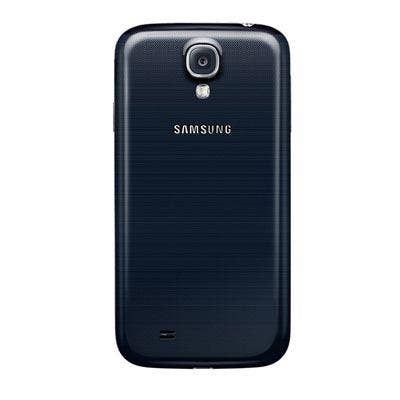
Cams And Sensors
Here's where Samsung plots a new course for the Galaxy. With GPS, gyroscope, accelerometer, ambient light detector and other sensors now standard in most smartphones, Samsung has added meteorological probes for temperature, humidity and barometric pressure to the mix, and it has even included a health app. What's more, Galaxy S4, like its Galaxy Tab brethren, also delivers an infrared emitter. This permits the device to double as a remote control for TVs, media players and other electronic components and control some apps while hovering and gesturing from a distance.
Galaxy S4 comes with a 13-megapixel rear-facing camera and 2MP front camera. The iPhone 5 includes an 8MP rear cam and a 1.2MP in the front. Both phones deliver lots of whiz-bang software with rear cameras that can capture 1080p video at full-frame rates and front cameras capable of 720p video capture. Winner Samsung.
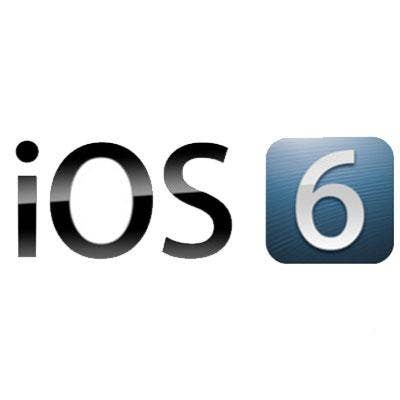
Software
The iOS platform is an intuitive and stable mobile OS that's as powerful as it needs to be and as power-efficient as they come. While the Android 4.2.2 Jelly Bean in the Galaxy S4 is the best one yet, it's a work in progress. A chief contributor to that progress has been Samsung and its excellent TouchWiz Android overlay with all Galaxy phones (except the Nexus S). Among recent innovations, apps work with the camera to track eye movement and pause media playback accordingly. The Galaxy S4 also includes KNOX, a kernel-level BYOD solution with boot protection that works alone or with a company's existing MDM solution to secure corporate data and keep it separate from the personal side. Of course, the Google Play application marketplace still cannot hold a candle to Apple's App Store, but it continues to catch up. The software advantage goes to Apple.
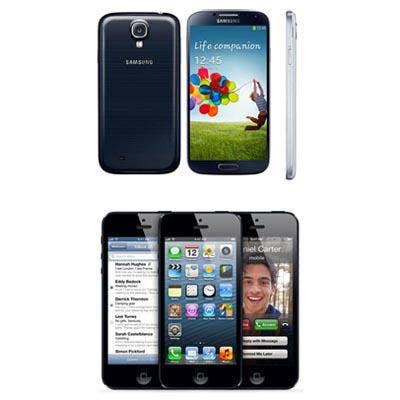
Bottom Line
Available since September, the iPhone 5 works on AT&T, Sprint and Verizon; prices start at $199 with a contract. The Galaxy S4 will begin selling in April on AT&T, Cricket, Sprint, T-Mobile, U.S. Cellular and Verizon. While prices have not been disclosed, we can perhaps gain some insight from researcher iSuppli, which this week revealed in a teardown of the Galaxy S4 that its total cost is $233 with the Snapdragon 600 processor. Compare that with a teardown of the iPhone 5 from September, which showed a cost of $199.
With the exception of NFC and IR in Galaxy S4, the two devices offer essentially the same networking and wireless capabilities. Apple's device builds in a non-replaceable 1440 mAh battery and Apple's legendary power management algorithms. Samsung's device comes with a 2600 mAh removable cell. The key differentiators will be software, whether the required apps are available and whether they can be deployed securely.